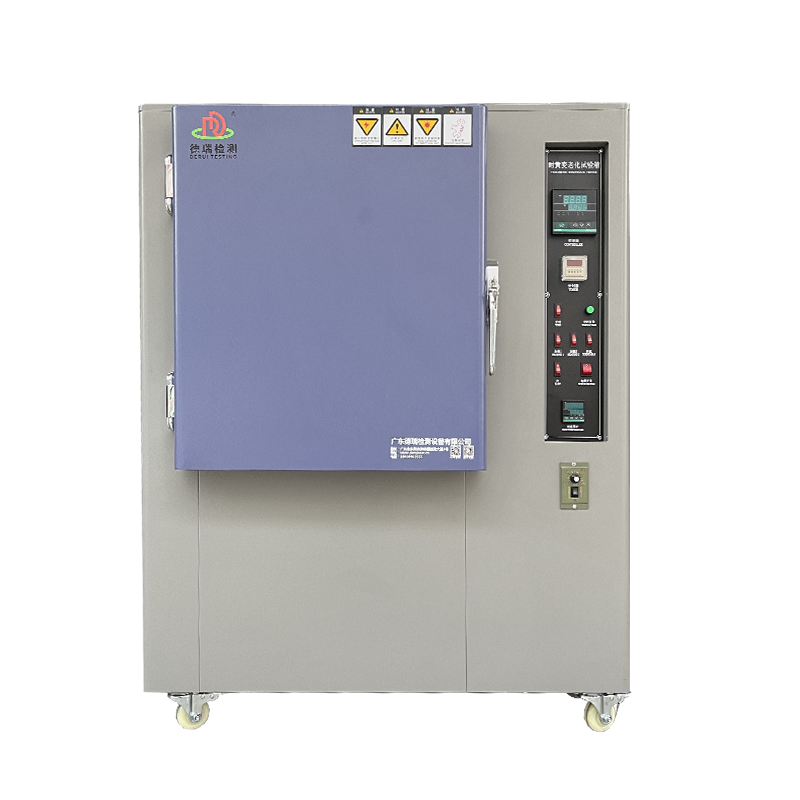
Vertical rotating anti yellowing aging box
Product Details:
Vertical rotating anti yellowing aging box Price And Quantity
- 148005.0 INR/Unit
- 1 Unit
Vertical rotating anti yellowing aging box Trade Information
- Cash in Advance (CID)
- 100 Unit Per Month
- 7 Days
- All India
Product Description
Vertical rotating anti yellowing aging box Item Specification
1. Internal chamber size(W*D*H) 50*50*60cm
2. External chamber size(W*D*H) 114*74*130cm
3. Temperature Range Ambient Temperature~200
4. Control Mode Automatic Calculation Controller
5. Temperature display accuracy 0.1
6. Control accuracy 3C12089124525-41
7. Distribution accurac 1 (ambient ~ 100)
8. Time memory 0-999 hours, Power Failure Memory Type, with Buzzer
9. Sample holder rotation speed Diameter 45cm, 102 roll/min
10. UV light source 300W UV lamp
11. Heating method Hot air circulation
12. Chamber material Internal: Stainless Steel SUS304;
13. External: Steel plate with baking varnish
Vertical rotary yellowing resistance aging chamber is a kind of equipment for evaluating the color change of materials under the action of light and temperature. By simulating the light and temperature conditions in the natural environment, the yellowing resistance of materials is tested to ensure the quality and service life of products.
Functions and features of vertical rotating yellowing resistance aging chamber
Simulation of natural light and temperature
The equipment can simulate the light and temperature conditions in the natural environment to test the yellowing resistance of materials. By controlling the spectrum and intensity of the light source, as well as the temperature inside the chamber, the effects of different levels of light and temperature on the material are simulated.
Vertical Rotating Design
Adopting vertical rotation design, the sample holder rotates vertically inside the chamber to ensure that all parts of the sample are uniformly illuminated, improving the consistency and accuracy of the test results.
Multiple Testing Methods
Supports xenon lamp aging test, UV aging test and thermal aging test. The xenon lamp aging test simulates the solar spectrum, the UV aging test simulates the effect of ultraviolet light on the material, and the thermal aging test evaluates the effect of temperature on the color change of the material.
Application Areas
Widely used in textiles, plastics, coatings, rubber, leather, printed materials and other fields to assess the yellowing resistance of materials under the action of light and temperature to ensure product quality and market competitiveness.
How to use Vertical Rotating Yellowing Chamber
Preparation before test
1. Sample preparation: Make sure the test material is clean, dry, free of defects and representative.
2. equipment check: make sure the equipment is in good condition and the light source and temperature control system are running normally.
3. Prepare the light source: use a light source that meets the standard, such as xenon lamp or UV lamp, to ensure that the spectrum and intensity meet the test requirements.
Setting test parameters
1. Place the sample: Fix the material on the vertical rotating sample holder, make sure the sample position is correct.
2. Setting parameters: according to the test standard, set the parameters such as light intensity, temperature and test time.
3. Start the equipment: turn on the equipment and start simulating the light and temperature environment.
Test process
1. Real-time monitoring: Observe the sample status and record the data during the test process.
2. Safety protection: the operator should wear protective equipment, pay attention to the ventilation of the test box to prevent light source radiation and high temperature affecting health.
The end of the test
1. Close the equipment: After the test is completed, turn off the power supply of the equipment. 2.
2. cleaning and maintenance: clean up the residue inside the test chamber and on the sample, keep the equipment clean.
3. Data Analysis: Organize and analyze the test data to evaluate the yellowing resistance of the material.
Matters needing attention when using the vertical rotary yellowing-resistant aging chamber
- Ensure the integrity of the sample: the sample should be clean, dry, free of defects and representative.
- Strict control of the test environment: the test environment should meet the requirements of light intensity, temperature, etc.
- Operator training: the operator should be professionally trained, familiar with the equipment operating procedures and safety regulations.
- Equipment maintenance: regular maintenance and repair of equipment to ensure normal operation.
- Safety protection: during the test, the operator should wear protective equipment, pay attention to the ventilation of the test chamber, to prevent the light source radiation and high temperature impact on health.

Price:
- 50
- 100
- 200
- 250
- 500
- 1000+



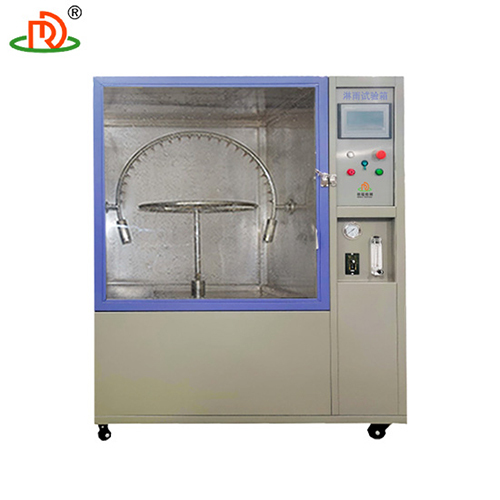
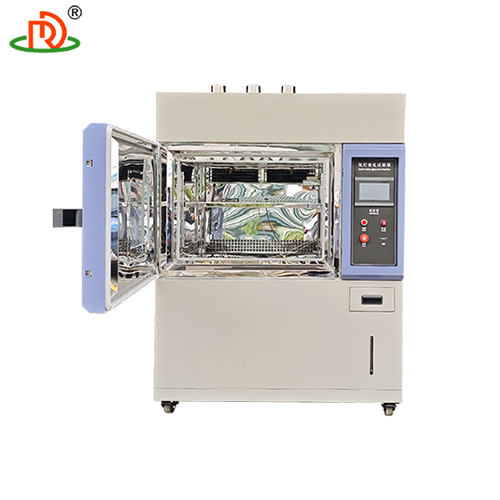
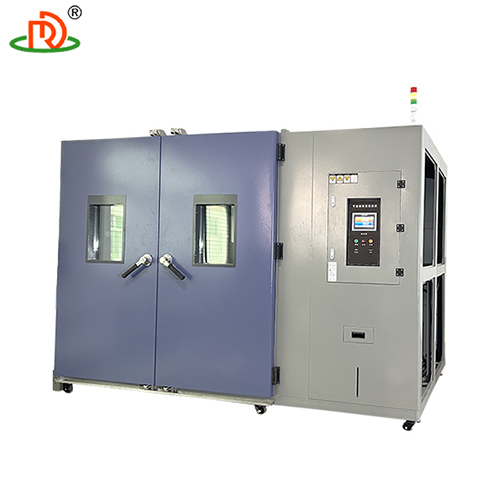
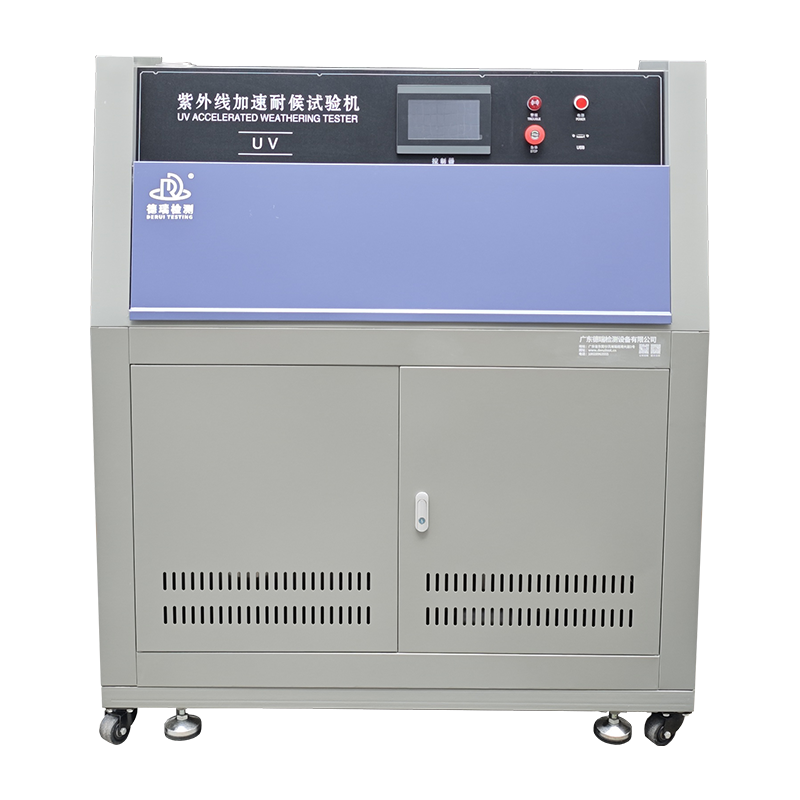

 English
English Spanish
Spanish French
French German
German Italian
Italian Chinese (Simplified)
Chinese (Simplified) Japanese
Japanese Korean
Korean Arabic
Arabic Portuguese
Portuguese